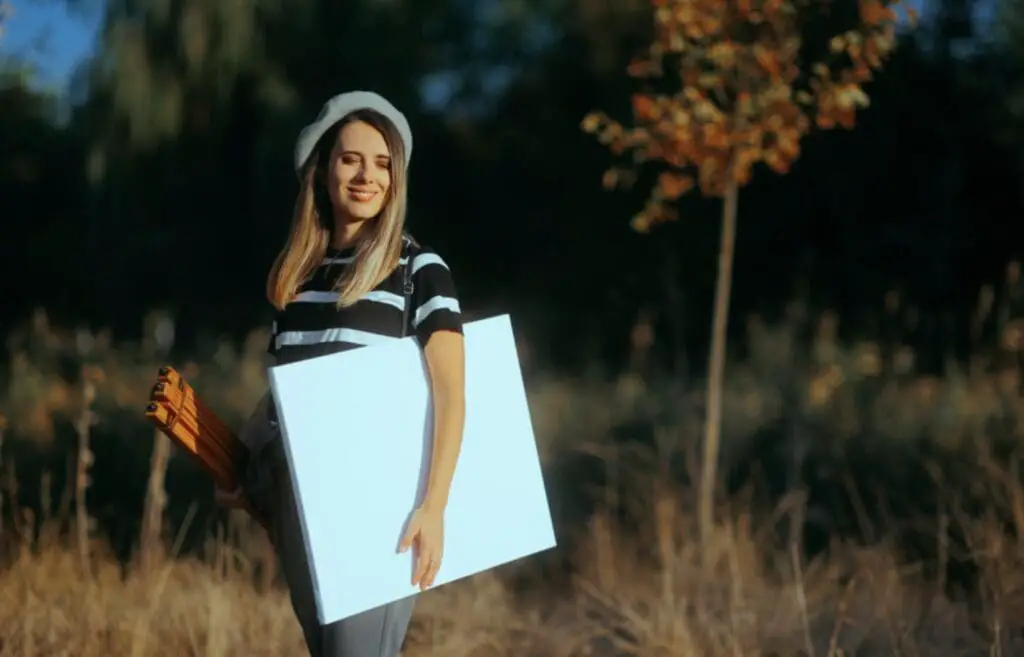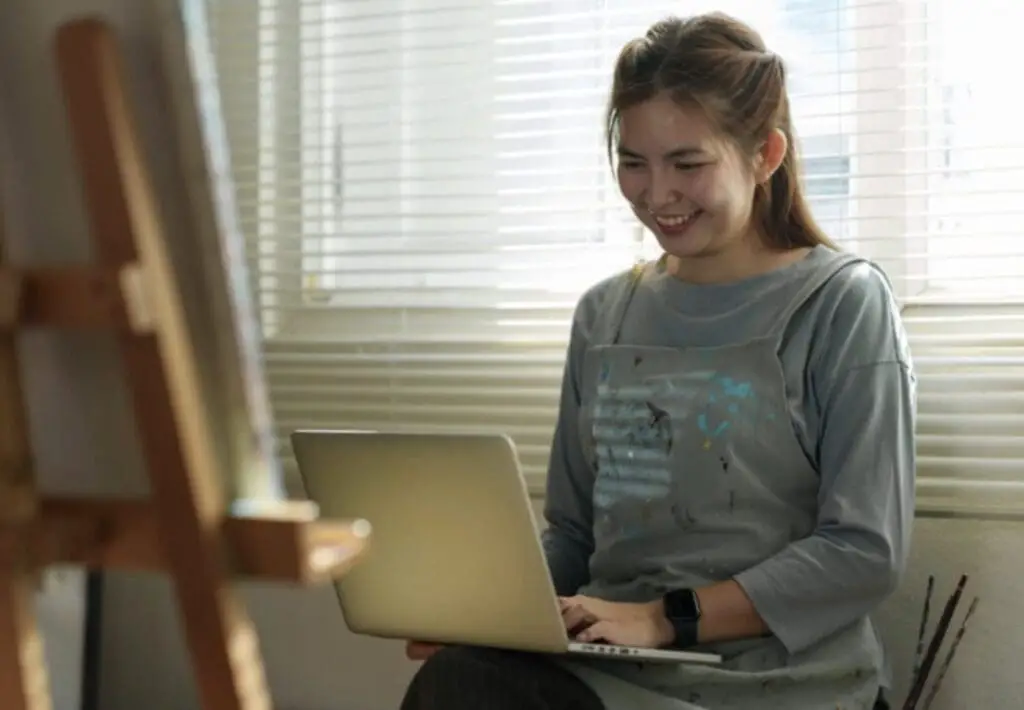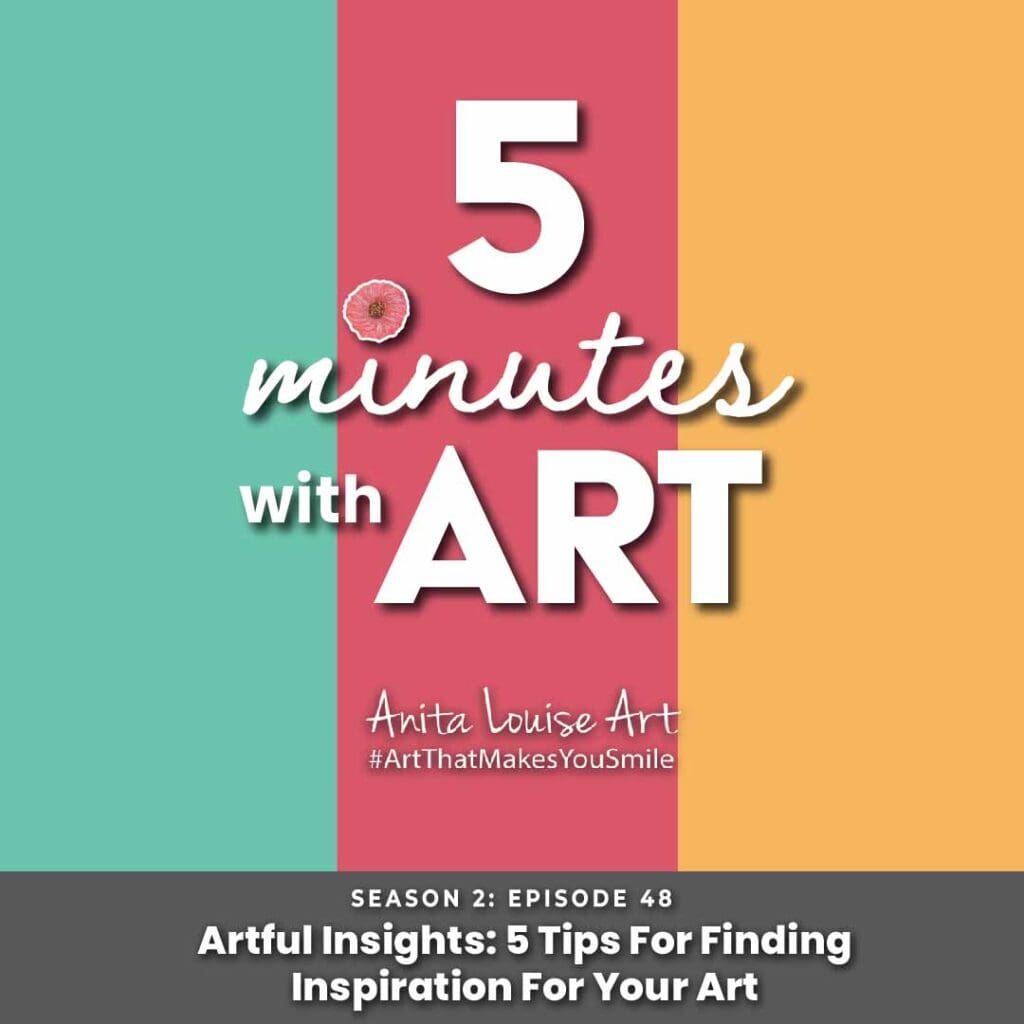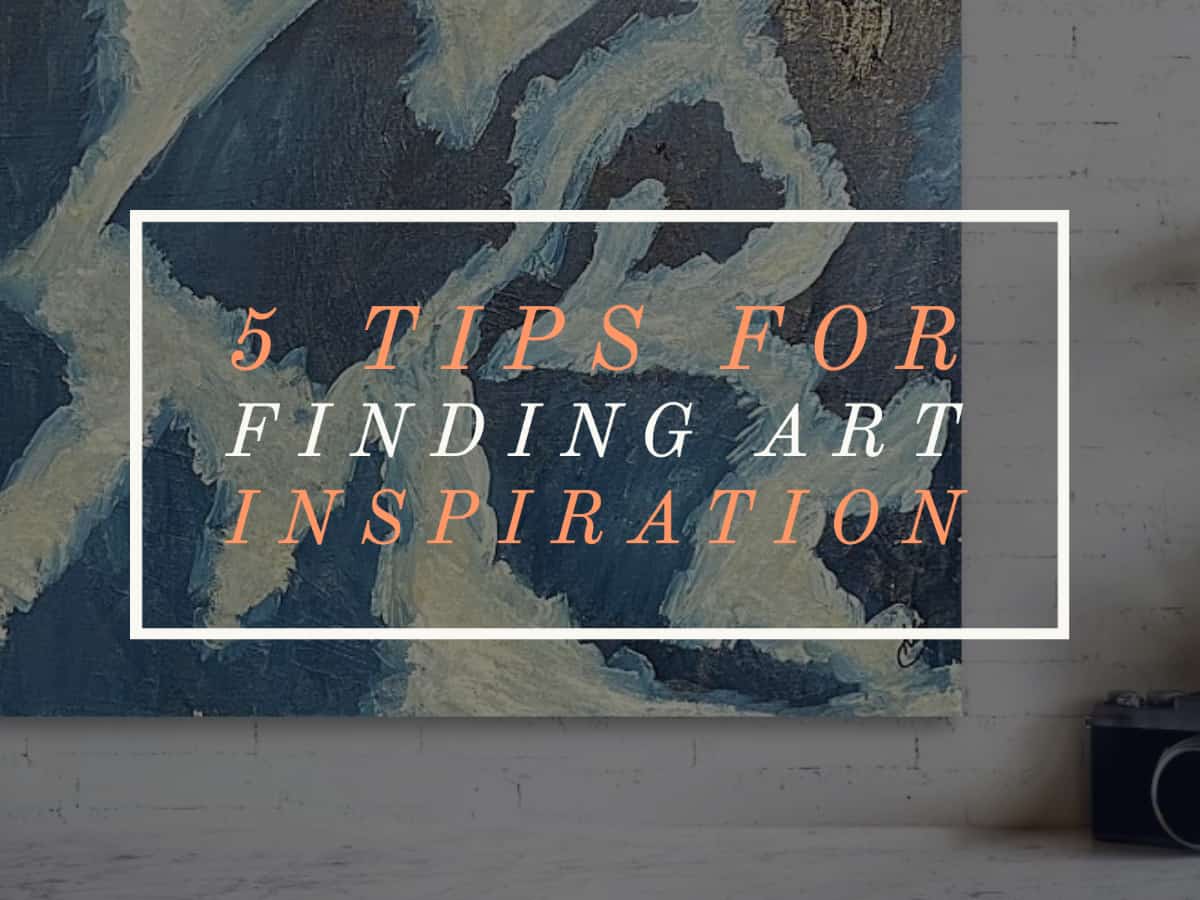Every artist should look for ways to find art inspiration all around them. The world is filled with art inspiration if you know how and where to look for it.
We have five tips to help you find art inspiration 1) get artistic eyes, 2) take a lot of inspiration photos, 3) study the work of the art masters, 4) copy the work of the art masters, and 5) draw in an art journal. All of these will help you to find artistic inspiration.
Table of Contents
- 5 Effective Strategies to Ignite Your Artistic Inspiration and Enhance Your Painting Skills
- Frequently Asked Questions
- Related Questions
5 Effective Strategies to Ignite Your Artistic Inspiration and Enhance Your Painting Skills
For artists, the quest for inspiration is a continual journey, with the world teeming with potential sparks of creativity. Recognizing and harnessing these sources of inspiration is key to artistic growth and expression.
To aid in this endeavor, we present five practical tips designed to fuel your artistic inspiration: developing an artistic perspective, capturing inspiration through photography, studying the works of master artists, practicing through imitation of these masters, and maintaining an art journal.
These strategies are not just methods to find inspiration; they represent a lifelong artistic development and improvement journey. Embracing these approaches can continually replenish your well of creative ideas, ensuring you’re never short on inspiration for your next painting or art project.

Get Artistic Eyes
One of the most important things you can do when you are starting to paint or for any form of art is to change your eyes from everyday eyes to artistic eyes
Here is what having artistic eyes means:
See Paintings Around You –
As you watch the sun go down, you do not just see a beautiful sunset; you start to see a painting. You look at the colors and how the sun is setting.
You see all the vivid oranges, reds, and other colors, and you think about how they will look painted on your canvas. When you have artistic eyes, you see the sunset in so much more depth, and you start to imprint shadows and colors on your mind.
See Shadows Around You –
When you have artistic eyes and you are talking to someone, you also start to see some of the shadows on their face, and you remember this for the time in the future when you are going to paint a face. With artistic eyes, you see things differently, like shadows, lights, and dark edges.
See Composition in Life –
No matter what you are doing or what you are looking at with artistic eyes you see the art composition. You then commit that to memory as you know it will help you when painting.
Snap Photos For Inspiration
Photos are a great way to capture something you want to paint or to capture some inspiration. Today, this is so easy to do as you do not need to carry an expensive camera around; all you need is a smartphone with a camera.
Smartphones today take wonderful photos. I use my smartphone to take a lot of photos for my blog posts. There is so much you can do today with your smartphone camera.
Use your smartphone as a camera to snap many photos for inspiration. It will help you remember those images so you can paint them. We also suggest that you use a program like Procreate, and you can import the photos and manipulate and adjust them before you even paint them.
You can find out more about using Procreate by reading our blog Procreate to Layout your Oil Paintings, What You Need to Know, by clicking here.
Study The Art of the Masters
One of the most time-honored ways of learning art is by studying the art of the masters. This was one reason in the 19th and early 20th centuries, so many of the North European artists went to Italy to study the work of the Italian masters.
They understood then that their study of the Italian masters who had gone before them would help them to develop their style.
So, these artists would systematically study the work of other artists as they knew it helped them with their own artistic technique, composition, and style.
If you study the art of the masters, it can also help you by:
Learning new techniques –
Through studying the work of great artists, you can learn many new techniques—everything from how they did their brushwork to how they mixed their paints.
Learning about composition –
The masters were extremely skilled at composition. Studying their composition can help you bring these composition techniques into your artwork.
Understanding your art style –
Studying the artwork of the masters is not about trying to clone or become just like them, but instead, it is about developing your unique artistic style.
This is why we suggest that you study all kinds of works of art masters. Learn about them – their artwork,- their lives, and their art techniques, composition, and style. It will help you with your artwork.
Today, this is easier than ever. You do not even need to travel the world. There is a ton of information available online, including on art blogs. (Check out our blog all the artists we have written about).
Some art museums even offer free online virtual tours of their collections. Check out our blog on 11 Virtual Art Museum Tours That Will Cost You Nothing by clicking here. You can tour these art museums from the comfort of your own home.

Copy The Master’s Artwork
Many of the Impressionist artists would go to the Louvre in Paris to copy the artwork of the masters. Today many art schools put the copying of the work of the art masters as part of their curriculum. They want their students to go out to the museums and other places to copy the art of the masters.
Vladimir London from The Khan Drawing Academy has said this as to why copying the art masters is so important.
“I have to say that copying art is still copying; however, don’t misunderstand. Copying from the Great Artists gives something else that every proficient fine artist must have –good taste in art and style.
Vladimir London
Copying the Old Masters allows you to develop better drawing techniques, understand what makes art beautiful, and discover time-honored drawing methods and techniques.
Art education needs to be built on the rich heritage of the past. It is like building a house on a strong foundation.”
Drawing and Sketching In An Art Journal.
Drawing and sketching in an art journal is a great way to improve yourself as an artist and to find inspiration for your art. When you see something that interests you or an idea for a painting comes into your mind, then you can draw it down.
That way, you can go back to it later as an idea for a piece of artwork. An artist should always carry a sketchbook and some pens or pencils so they can sketch out the ideas that they see in the world around them.
I feel like having an art journal is a great thing, but you do not need to have an actual physical art journal; instead, today, with the use of technology, you can have a digital art journal. I recommend that you consider getting an Ipad and then use the Procreate app to draw out your art and design ideas.
Here are the reasons why we love using our iPad and the Procreate app as our Art Journal:
- It is portable – Using an iPad that has the Procreate app on it is practical for most people and also very portable.
- It is easy and convenient – I find if I have my art journal on something like my iPad, then I have a better chance to actually use it more often as it is easy and convenient to use.
- it is digital – I love that it is all digital. This makes it easy to organize or even share your art journal with others.
- Like a pen, pencil, and paper – Using Procreate and an iPad as an art journal works just like you had a pen, pencil, and paper in hand. Procreate allows you to adjust the settings so that your Apple pencil works very close to an actual pen or pencil.
If you know where and how to look for it, there is art inspiration all around you. By actively seeking to develop these 5 tips of 1) getting artistic eyes, 2) taking a lot of inspiration photos, 3) studying the work of the art masters, 4) copying the work of the art masters, and 5) drawing in an art journal it will help you to become a better artist.
Listen To Our Podcast About Artful Insights: 5 Tips For Finding Inspiration For Your Art Below or By clicking here.

Anita Louise Art is dedicated to art education, great artists, and inspiring others to find and create their art. We love art that uplifts and inspires. #ArtToMakeYouSmile! #ArtToMakeYouHappy!
If you want to see any of my art, you can find out more by clicking here. If you are interested in what inspires me and my paintings, you can discover more by clicking here.
We have a free newsletter and would love you to be part of our community; you can subscribe to the newsletter by clicking here. If you have any questions, I would be happy to talk to you. You can reach me, Anita, by clicking here.
Subscribe to our Anita Louise Art YouTube Channel filled with great videos and information by clicking here.
Join us for our podcast “5 Minutes With Art.” Spend just 5 minutes a week with us to discover and learn about great art and artists. You can find out more about our podcast by clicking here.
Frequently Asked Questions
What does it mean to “get artistic eyes”?
Getting artistic eyes refers to developing a heightened sense of observation and appreciation for the visual elements around you. It involves training yourself to see the world with an artist’s perspective, noticing details, colors, and compositions that can serve as inspiration for your artwork.
How can taking inspiration photos enhance my artistic creativity?
Taking inspiration photos allows you to capture interesting scenes, textures, or patterns that may serve as references for future artwork. These photos serve as a visual library, providing you with a resource to draw from when you’re seeking inspiration for your paintings.
Why is it important to study the work of art masters?
Studying the work of art masters exposes you to a wealth of artistic techniques, styles, and concepts. Analyzing their creations helps you understand the principles of art, enabling you to incorporate these elements into your own work and develop a deeper understanding of the craft.
Is it okay to copy the work of art masters, and how does it benefit my art?
Copying the work of art masters is a common practice in art education. It allows you to delve into the details of a masterpiece, helping you understand the artist’s techniques and brushstrokes. This exercise aids in developing your technical skills and broadens your artistic repertoire.
What is the purpose of maintaining an art journal, and how does it contribute to inspiration?
Drawing in an art journal provides a personal space for creative exploration. It allows you to experiment, express ideas, and document your artistic journey. The act of drawing in a journal can spark new ideas, serving as a constant source of inspiration for your larger paintings.
How can I develop artistic eyes if I’m not naturally inclined?
Developing artistic eyes is a skill that can be cultivated over time. Practice active observation by consciously paying attention to details in your surroundings. Engage in activities like sketching or jotting down notes about what you see to enhance your visual awareness.
Are there specific art masters I should focus on when studying their work?
While there’s no strict rule, it’s beneficial to explore the work of various art masters from different periods and styles. Iconic figures like Leonardo da Vinci, Vincent van Gogh, and Pablo Picasso can be great starting points, but don’t limit yourself—discover artists whose work resonates with you personally.
Should I only take inspiration photos of traditional art, or can I find inspiration in everyday scenes?
Inspiration photos can come from a variety of sources, including both traditional art and everyday scenes. Look for beauty and interest in mundane settings, as well as in the work of other artists. A diverse range of sources will enrich your visual vocabulary.
Related Questions
How Can Procreate Help You Become A Better Oil Painter?
Procreate is an award-winning iPad app that was designed specifically for the Apple Ipad. Like many of the Apple programs, this program is user-friendly and has a lot of very nice features.
There are several ways that you can use procreate to become a better oil painter. Procreate can help you set up palettes and color combinations and to do a layout of your painting before you paint it. I find it a very essential tool to help me with my oil painting.
To discover more of how Procreate can help you with your painting, you can read our blog on How Procreate Can Help You Be a Better Oil Painter by clicking here.
How Can I Use Procreate to Help Me Layout My Artwork On My Canvas?
If you know how to lay your painting onto the canvas, it can make your painting easier. It will help you to get the proportions of your painting correct.
We have outlined six very easy steps to properly layout our painting on the canvas. We first laid out our painting on Procreate. Once we have it laid out on Procreate, then we will print it out. We like to print it out in the size of our actual canvas so that we can then use the print to trace it onto the canvas. Once we have traced it on the canvas, checked it, and filled in the lines we need, then we are ready to start painting.
You can find out more about these six basic steps by reading our blog 6 Easy Steps to Layout Your Painting On the Canvas by clicking here.

